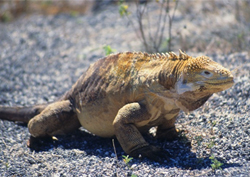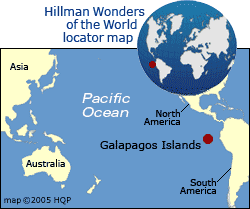Galapagos Islands
 Why the
Galapagos Islands
are special
Why the
Galapagos Islands
are specialThe Galapagos Islands of Ecuador are remote. They are some 1000 kilometers (600 miles) off the South American mainland.
As Charles Darwin discovered, this geographical isolation enabled Galapagos Island creatures to slowly evolve into new versions of themselves, ones that are found nowhere else on earth.
Nearly all the 60,000 plus travelers who visit the Galapagos Islands take a Galapagos cruise to see the fascinating wildlife.
Read my Galapagos Travel Guide
I created a Galapagos Travel Guide to introduce you to this unique adventure.
Read my Galapagos Cruise Guide
I created a Galapagos Cruise Guide to introduce you to the cruise options and tradeoffs.
People
First human to set foot
Charles Darwin wasn't first. Hardly. He arrived in 1835, exactly 300 years after the islands were discovered in 1535 when a ship was blown off course. Although there is speculation that the Incas knew of the place before 1500, the evidence is tenuous.
Past residents
They included pirates, whalers, convicts, and early settlers.
Today's population
It's around 20,000. Most residents live in Puerto Ayora (9,000) and Puerto Baquerizo (6,000).
Tourist count
Currently, more than 60,000 tourists per year visit the Galapagos. The maximum government permitted number is 90,000.
Geology
Origin
The Galapagos Islands were formed by accumulating lava oozing upward from beneath the ocean floor. This geological process reached sea level nearly 4 million years ago.
Today
Some of the volcanoes are still active, with occasional eruptions and seismic activity.
The islands physically differ
The terrain and topography vary. Some islands are small and flat, others big and tall.
Location Map



